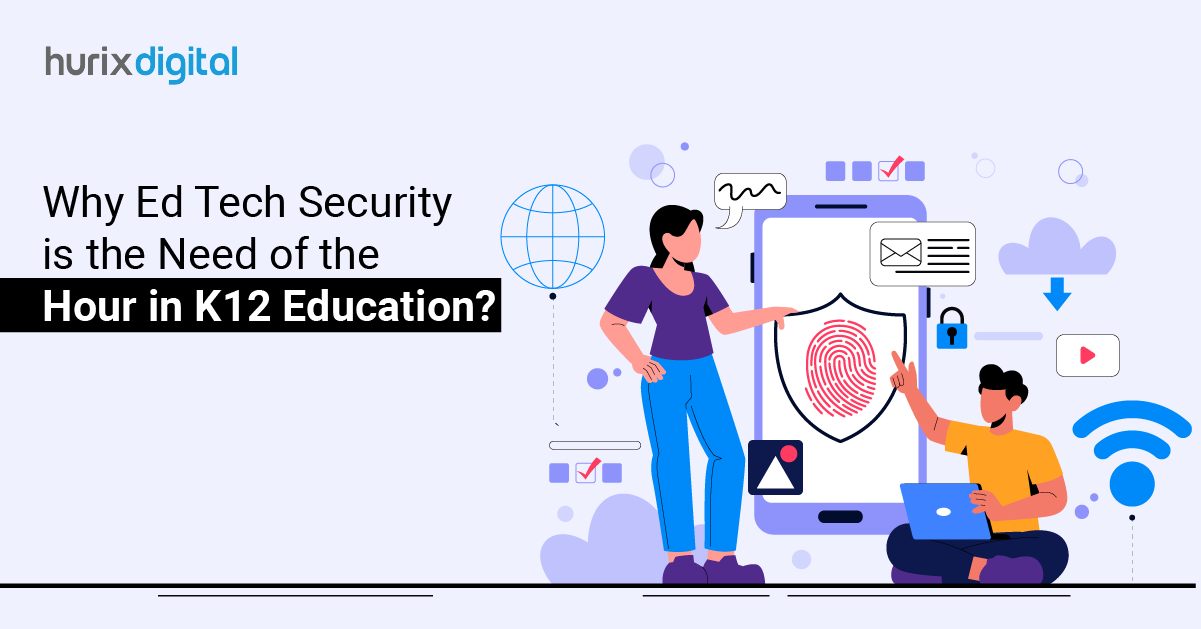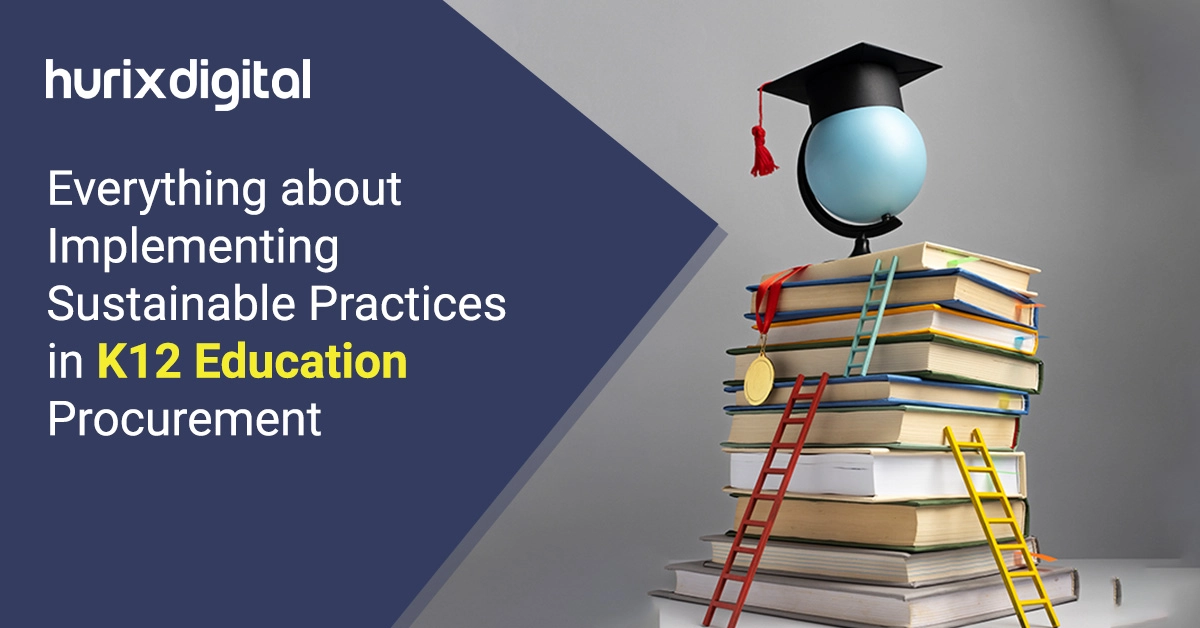
Why EdTech Security is the Need of the Hour in K12 Education?
Summarize with:
The progressive adoption of digitization in K12 has made it a prime target for threat actors in recent years. According to ThreadDown’s 2024 State of Ransomware in Education report, there was a massive spike (nearly 70% from 2022 to 2023) in ransomware attacks on educational institutions. Of these, 36% specifically targeted K12 institutions.
These figures bring to the forefront the need for improved EdTech security across K12 institutions and the education sector as a whole. This blog will help you navigate the complexities of K12 cybersecurity and establish security policies for your schools. So, let’s get started.
Table of Contents:
- Why are K12 Institutions Prime Targets for Threat Actors?
- What Can You Do to Protect Student Information?
- Cybersecurity Best Practices in K12
- Wrapping Up
Why are K12 Institutions Prime Targets for Threat Actors?
Several contributing factors make K12 institutions prime targets for cyber attacks.
1. Student (And Teacher) Data
K12 institutions are a gold mine of data for threat actors. Schools tend to store information like birthdays, home addresses, information about parents/guardians, and more. Such sensitive information can be utilized to conduct phishing attacks by impersonating them.
K12 institutions also tend to use the “.edu” top-level domain (TLD), which again has a high potential to be missed in phishing attacks.
2. Lack of Funding
According to the Cybersecurity Assessment of the 2022–2023 School Year by the Center for Internet Security, 81% of K12 institutions lack the funding to implement any form of educational technology security.
With cybersecurity being an ongoing process that needs constant monitoring and upgradation to stay a step ahead, hiring a dedicated cybersecurity team is a distant dream for such organizations.
Due to the lack of funding, this institution also functions on legacy software and hardware which makes them an easy target for threat actors.
3. The Increased Use of Personal Devices
While it is easier to implement security protocols within an educational institution, today, educators, as well as students, use their devices to interact with K12 infrastructure. By doing so, they open up several access points that threat actors can exploit, or they unintentionally introduce malware into the system.
According to research by the non-profit Internet Safety Labs, upwards of 95% of apps that K12 institutions use do not follow proper data-sharing practices, which further exacerbates the problem.
Also Read: The Privacy Puzzle: K12 EdTech and Protecting Student Data
4. Threat Actors Often Get Paid Ransoms
A significantly large number of schools tend to pay the ransom in the hopes of getting their student back. While there is no guarantee of this, it often costs cash-strapped K12 institutions far less to pay the ransom than to deal with other costs involved in the event of a data breach.
There has also been a prevalent trend of thread actors reaching out to individual parents demanding a ransom in exchange for the return of their child’s sensitive information.
What Can You Do to Protect Student Information?
As decision-makers, you can take multiple steps to improve student data protection in your K12 institutions.
1. Address your Financial Constraints
As we previously discussed, K12 institutions face a primary challenge due to a lack of financial resources, which prevents them from beefing up their EdTech security measures. To address this, you could:
- Apply for the State and Local Cybersecurity Grant Program the Cybersecurity and Infrastructure Security Agency (CISA) offers to eligible K12 institutions.
- Opt for free or low-cost cybersecurity services.
- Move your IT infrastructure to the cloud. It is more cost-effective than hosting it yourself, and cloud services offer the added benefit of scaling up or down as needed.
2. Invest in Incremental EdTech Security Measures
While a complete overhaul may not be feasible overnight, you can start making directed investments into cybersecurity tech that has the maximum impact on your cybersecurity infrastructure. For example, you can consider:
- Investing in authentication technology.
- Investing in a robust anti-malware security solution.
- Investing in network monitoring tools.
3. Implement a Cybersecurity Training Program
According to Infosecurity Security Magazine, Phishing accounted for nearly 30% of all cyberattacks on K12 institutions in 2023. You can:
- Conduct Phishing awareness training for your staff and students.
- Conduct periodic cybersecurity training.
- Join groups like Multi-State Information Sharing and Analysis Center (MS-ISAC) and K12 Security Information eXchange (K12 SIX) to stay abreast with all relevant information.
Cybersecurity Best Practices in K12
Cybersecurity is a complex science that is in a constant state of flux. That said, there are several cybersecurity best practices you can implement immediately to improve your EdTech Security.
- Implement Identity and Access Management: Compartmentalize and limit access to data to the relevant people who need access to it. For example, someone in your accounts department should not have the same level of access as an administrator.
- Enforce Stronger Password Requirements: The stronger the password, the more difficult it is to hack into accounts. Set minimum character limits and require a combination of letters, numbers, and special characters.
- Re-Enforce Security With Multifactor Authentication: Multifactor authentication(MFA) adds a second layer of defense in the event a password has been compromised. It is a technology that requires an additional form of identity verification (for example, password + use unique code or password + mobile-based login approval) to log into your systems.
- Whitelist Applications: Limit students and educators to using apps that are known to be from trusted sources and have a good security track record.
- Back-Up Your Data Periodically: Most ransomware attacks take your data hostage. Back your data frequently, so it’s easier to revert to a previous backup than having to pay a ransom to thread actors.
- Develop a Disaster Response Plan: Have a cybersecurity response plan in place to take immediate next steps in the event of a cybersecurity attack.
- Conduct Periodic Cybersecurity Training and Awareness Programs: Train your staff, educators, and students on cybersecurity basics, and integrate the training into your onboarding plan.
- Keep Your Systems Updated: Cybersecurity is a never-ending race between threat actors and cybersecurity specialists trying to one-up each other. Ensure your systems are running the latest versions of the software and have all the latest security patches installed.
Also Read: 10 Ethical Considerations and Data Privacy Laws to Consider in the EdTech Industry
Wrapping Up
EdTech Security needs to be prioritized in light of the escalating threat landscape. While the K12 industry is grappling with a shortage of essential funding, you, as leadership, can take several immediate steps to mitigate these threats. The steps and best practices outlined in this blog should help you do just that.
At Hurix Digital, we realize the importance of protecting student data and hence offer comprehensive Cloud Security Services to help ensure your IT infrastructure. We start with a deep dive with your IT leadership and then take things forward from there. Our dedicated content development also helps create the necessary course material (simulation-based courses, micro-learning courses, and more) to aid in your cyber security training.
Get in touch with us to know more.
Summarize with:

Senior Vice President – Business Development
at Hurix Digital, with over 25 years of experience in EdTech and workforce learning. He excels in business development, customer relationship management, and scaling digital learning solutions, driving global growth through innovative content, simulations, and AI‑driven training offerings
 A Space for Thoughtful
A Space for Thoughtful 




